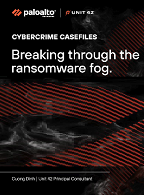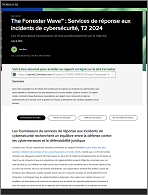‘ Part 1: Use ADO to open the Excel spreadsheet.
Dim oCN
Set oCN = CreateObject("ADODB.Connection")
oCN.Open "Excel"
Dim oRS
Set oRS = oCN.Execute("SELECT * FROM [Sheet1$]")
‘ Part 2: Use ADSI to obtain a reference to the NT domain.
Dim oDomain
Dim sPDC
sPDC = "NT4PDC"
Set oDomain =
LISTING : Bulk-users.vbs

GetObject(« WinNT:// » & sPDC)
‘ Part 3: Open an output text file to store users initial passwords.
Dim oFSO, oTS
Set oFSO = CreateObject(« Scripting.FileSystemObject »)
Set oTS = oFSO.CreateTextFile(« C:\passwords.txt »,True)
‘ Part 4: For each record in the record set, add the user, set the correct user
‘ properties, and add the user to the appropriate groups.
‘ Create the necessary variables.
Dim sUserID, sFullName, sDescription
Dim sHomeDir, sGroups, sDialIn
Dim sPassword, oUserAcct, oFolder
Dim sGroupList, iTemp, oGroup
‘ Define the base path in which to create the home directories.
Dim sHomePath, sMsg
sHomePath = « \\iridis1\c$\users\ »
‘ Go through the record set one row at a time.
Do Until oRS.EOF
‘ Get the user information from this row.
sUserID = oRS(« UserID »)
sFullName = oRS(« FullName »)
sDescription = oRS(« Description »)
sHomeDir = oRS(« HomeDirectory »)
sGroups = oRS(« Groups »)
sDialIn = oRS(« DialIn »)
‘ Make up a new password.
sPassword = Left(sUserID,2) & DatePart(« n »,Time) _
& DatePart(« y »,Date) & DatePart(« s »,Time)
‘ Create the user account.
On Error Resume Next
Set oUserAcct = oDomain.Create(« user »,sUserID)
If Err <> 0 Then
sMsg = « An error occurred creating user » _
& sUserID & vbCrLf & vbCrLf
sMsg = sMsg & « The error is: » & Err.Description
MsgBox sMsg
End If
On Error Goto 0
‘ Set account properties.
oUserAcct.SetPassword sPassword
oUserAcct.FullName = sFullName
oUserAcct.Description = sDescription
oUserAcct.HomeDirectory = sHomeDir
‘ Set RAS permission.
If sDialIn = « Y » Then
oUserAcct.RasPermissions = 9
Else
oUserAcct.RasPermissions = 1
End If
‘ Save the account.
oUserAcct.SetInfo
‘ Get a reference to the new account.
‘ This step provides a valid SID and other information.
Set oUserAcct = GetObject(« WinNT:// » & sPDC & « / » & sUserID & « ,user »)
‘ Write the password to a file.
oTS.Write sUserID & « , » & sPassword & vbCrLf
‘ Part 4A: Add the user account to groups.
‘ Use the Split function to turn the comma-separated list into an array.
sGroupList = Split(sGroups, « , »)
‘ Go through the array and add the user to each group.
For iTemp = 0 To uBound(sGroupList)
‘ Get the group.
Set oGroup = GetObject(« WinNT:// » & sPDC & « / » & sGroupList(iTemp) _
& « ,group »)
‘ Add the user account.
oGroup.Add oUserAcct.ADsPath
‘ Release the group.
Set oGroup = Nothing
Next
‘ Part 4B: Create the user s home directory.
‘ (Append the UserID to the Home Path variable).
Set oFolder = oFSO.CreateFolder(sHomePath & sUserID)
‘ Part 5: Release the user account.
Set oUserAcct = Nothing
‘ Move to the next row in the record set.
oRS.MoveNext
Loop
‘ Part 6: Final clean up and close down.
oRS.Close
oTS.Close
WScript.Echo « Passwords have been written » & « to C:\passwords.txt. »
Téléchargez cette ressource

État des lieux de la réponse à incident de cybersécurité
Les experts de Palo Alto Networks, Unit 42 et Forrester Research livrent dans ce webinaire exclusif leurs éclairages et stratégies en matière de réponses aux incidents. Bénéficiez d'un panorama complet du paysage actuel de la réponse aux incidents et de sa relation avec la continuité de l'activité, des défis auxquels font face les entreprises et des tendances majeures qui modèlent ce domaine. Un état des lieux précieux pour les décideurs et professionnels IT.
Les articles les plus consultés
Les plus consultés sur iTPro.fr
- La cybersécurité, c’est le rôle de tous !
- DORA : quels impacts après les six premiers mois de mise en conformité sur le terrain ?
- Cybersécurité : le secteur de la santé toujours au défi de la sécurité des e-mails
- Attaque Microsoft SharePoint, analyse et recommandations
- Devenir RSSI : quels parcours et de quelles qualités faire preuve ?










